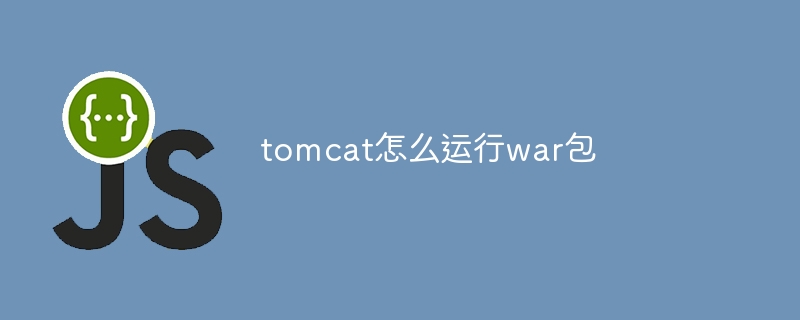Home >Web Front-end >JS Tutorial >How to run war package in tomcat
How to run war package in tomcat
- 下次还敢Original
- 2024-04-21 08:46:01631browse
To run a WAR package in Tomcat, follow these steps: Deploy the WAR package to Tomcat's webapps directory. Start Tomcat. To verify the deployment, visit http://localhost:8080/<your_app_name> in your browser.

How to run the WAR package in Tomcat
Running the WAR (Web archive) package is to convert the Java Web application Common methods of deploying to Tomcat servers. The following are the steps to run the WAR package in Tomcat:
1. Deploy the WAR package
- Copy the WAR package to Tomcat's
webappsTable of contents. - Tomcat will automatically unpack the WAR package and deploy it as a web application.
2. Start Tomcat
- Open a command prompt or terminal window.
- Navigate to Tomcat’s bin directory.
- Start Tomcat using the following command:
<code>startup.bat</code>
(for Windows)
<code>startup.sh</code>
(for Linux and Mac)
3. Verify deployment
- Open a browser and visit the following URL:
<code>http://localhost:8080/<your_app_name></code>
(where <your_app_name> is the name of the project in the WAR package Name)
- If the deployment was successful, you should see the home page of the web application.
Other notes:
- Context path: After the WAR package is deployed, it will have a context path, with Used to identify the location of the application on the server. The context path defaults to the file name of the WAR package, but can be configured in web.xml.
-
Hot Deployment: Tomcat supports hot deployment, which means that the application is automatically reloaded when the files in the WAR package change. To enable hot deployment, set the
reloadableproperty totruein server.xml. - Debugging: To debug an application running in Tomcat, enable debug mode in the Tomcat server and connect to Tomcat using the Java debugger.
The above is the detailed content of How to run war package in tomcat. For more information, please follow other related articles on the PHP Chinese website!

